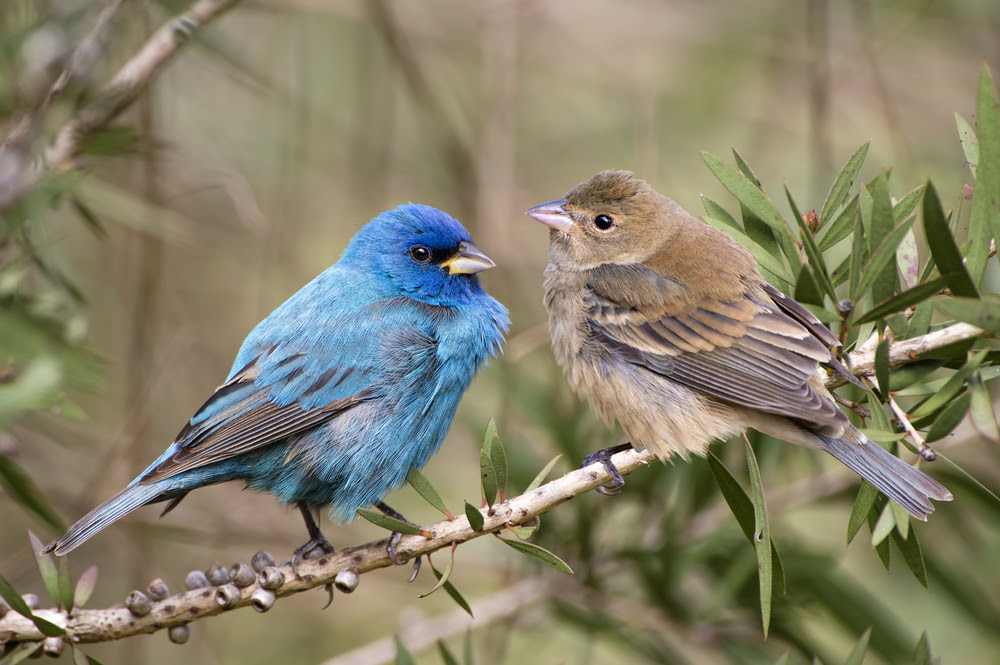Indigo Bunting, Passerina cyanea
Bill Rowe
A first view of a male Indigo Bunting, especially through a scope, will reliably stun people who have never seen one before. Nearly the whole bird is an intense blue, although the tone varies from one part of the bird to another and to some extent with the lighting; it depends on feather structure, not on pigment. As in many birds, females are about the same in size and shape as males but very different in color (see Identification). Indigo Buntings are found wherever there is some shrubby or unkempt growth, from roadsides to old fields to openings in woods. They are absent from the mowed-and-manicured parts of cities and suburbs but can still be found at times in parks where some “natural” habitat is allowed. As you drive along through the countryside, watch for a very small all-dark bird on a power line; that’s a male Indigo, and it may turn blue as you drive by and glance at it in better light (recommended glancing time, no more than one second). And when you are out hiking, listen for its bright, emphatic song, with short phrases that are mostly paired, along the lines of “Sweet sweet, where where, here here, see-it see-it…” The singer is usually easy to spot on a tree branch or the top of a shrub.
IDENTIFICATION: The male is unique: the size and shape of a sparrow, but all blue. It is quite different from the larger, plumper Eastern Bluebird with its reddish breast and white belly, and more like the Blue Grosbeak, which is also all blue but is larger with a much bigger bill and rusty wingbars. The female is a plain little tan bird with a conical bill and slight streaking on the breast but none on the head or back; this separates her from sparrows, which all have some form of head pattern and back streaking. Males in the fall and in their first spring may show less blue and a lot of brown.
ST. LOUIS STATUS: One of our commonest summer birds, arriving in late April and departing again in October for Mexico and Central America. Very rarely, an Indigo will linger into winter.
Learn more and listen to the songs and other sounds of Indigo Buntings here.




